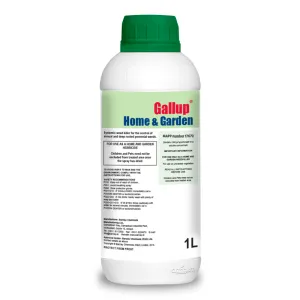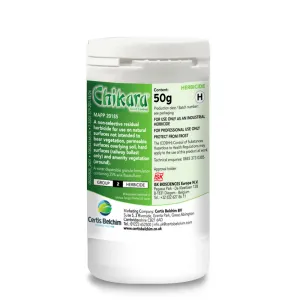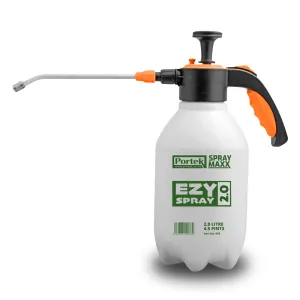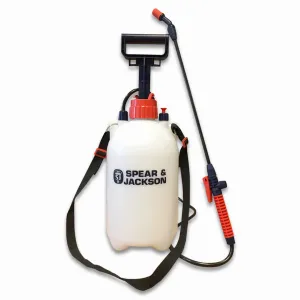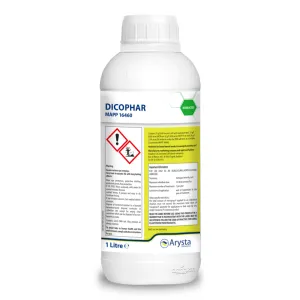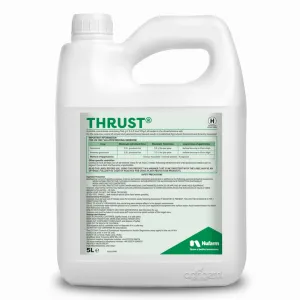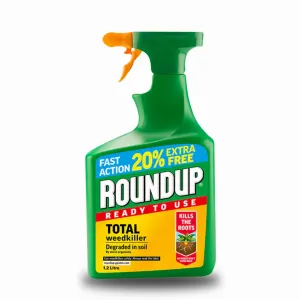One: The Weather
The unpredictable British weather frequently disrupts our gardening and growing efforts, but when it comes to applying herbicide, nothing thwarts our weed control endeavours quite like the weather.
Rain
Pick your moment carefully and think about temperatures and moisture levels. Most liquid post-emergent (applied to growing weeds) weed killers need a rain-free window of 6-24 hours. This time period allows the herbicide to be properly absorbed into the leaves.
If it rains too soon, the product gets washed off, drastically reducing its effectiveness. Make sure you consult the product label to check the rain-fast period for the product you are using.
Temperature
Most weed killers work best when weeds are actively growing – generally speaking, this is between late spring and early autumn in the UK.
In cold weather, plant growth slows, and its metabolism decreases. This means that it absorbs and transports the herbicide much slower – if at all. So always avoid spraying during cold snaps, frosts, and during the winter (unless your herbicide is specifically designed to work in cold temperatures).
If it’s too hot, plants can become stressed (especially during drought) and effectively shut down in order to conserve moisture. Just as in cold weather, this means the weed is less likely to absorb the herbicide as effectively. Bear in mind that spraying during very hot weather can mean the herbicide evaporates before it is absorbed.
Wind
It is important not to spray weed killer when it is very windy. This is because of the risk of spray drifting onto other non-target plants, neighbouring gardens, crops, ponds, fields and so on.
However, if there is no wind at all, there is a risk that the spray may linger in the air and not reach its target. So choose a day when there is a slight breeze to ensure the spray is carried to where it needs to be.
See our guide on the impacts of weather and weed killers for more information.
Two: Product Choice and Dose
Rule one when it comes to product choice is know what you’re fighting and match the product to the weed.
Product choice
Making sure you choose the right product for the weed is vital as not all weed killers will kill all weeds. Selective herbicides for example, are formulated to target broad-leaved weeds without harming your grass. They are therefore ineffective against weed grasses like couch grass or annual meadowgrass.
Some selective herbicides will treat certain weeds better than others, use our weed guides for more information on which product to use for which weed.
Contact herbicides kill the foliage they touch. This means they work very well for annual weeds but less well on deep-rooted weeds like bindweed or docks. If you use a contact herbicide on these types of weeds, you will soon see them grow back, as they just burn off the top growth.
For these tougher weeds, you need a systemic weed killer like glyphosate that travels to the roots killing the entire plant. Bear in mind though that glyphosate will kill your grass, so do not use these on lawn weeds.
Find out more about the different types of weed killers in our guide.
Dose
When it comes to the dose, the maxim ‘more is better’ is a costly misconception and can cause weeds to continue to grow. This is because when you overdose, the chemical can act too quickly, scorching the foliage before it has a chance to travel to the roots. This can cause you to think your herbicide is acting quickly, only to leave you scratching your head when the target weeds are still thriving two weeks later. The chemical also crystalises on the leaf surface and does not get absorbed if it is too concentrated.
Similarly, underdosing will only wound the plant, not kill it. Always consult the product label for accurate dilution and application rates.
Bear in mind that using herbicide in a watering will be ineffective as the solution will be washed off the leaf. It needs to be applied with a sprayer with as fine a mist as possible to create a complete blanket coverage of the weed, so that there is no risk of atomising or the product drifting away.
Three: Timing
Try and treat weeds when they are young and actively growing. Once weeds are large, woody or have set seed, they are much harder to kill as their ability to absorb and transport the herbicide effectively is greatly reduced.
For perennial weeds, a second application later in the year (early autumn) can be effective as this is when they move nutrients down to their roots for winter storage.
If you are faced with very large, mature weeds, manual removal of the whole weed including its roots is an option. Alternatively for multiple weeds, remove the foliage with a mower or strimmer and then treat the re-growth with herbicide.
If you’re treating weeds in a lawn, wait around three to five days after mowing before applying a selective weedkiller. This ensures the weeds have enough of a leaf surface to absorb the herbicide. If you apply it too quickly after mowing, the chances are you will only have weed stems left – which won’t give you enough surface area for the herbicide to work effectively.
Them once you have applied the herbicide, wait at least three to five days before mowing again to ensure the chemical has fully translocated through the weed.
Again, always check your product label for specific mowing intervals, as there are variations.
Four: Equipment Contamination
It may not be the most obvious consideration when trying to figure out why your weed killer has seemingly failed to work, but it is an under looked and important one.
If you do not thoroughly wash out your sprayer and nozzles after each use, residue can build up and clog nozzles or filters, reducing flow and causing uneven coverage. This means weed foliage can be missed or receive too low a dose to be effective.
Similarly, if you don’t completely drain or rinse your sprayer, the old residual solution remains, diluting the new batch – and causing a weaker more ineffective herbicide solution.
Traces of a previous chemical can react with a new chemical which can cause a range of issues including neutralising the herbicide completely or cause the herbicide particles to flocculate (clump together) and settle as sludge – again greatly reducing its effectiveness.
Five: Patience
Although weed killers are getting to work right away, this does not mean you will see them die straight away.
Weed killers take time to work and although you will see results quickly with contact herbicides, in many cases, you may not see results for around 10 days to two weeks with other types of weed killers. In some cases, for tough deep-rooted perennial weeds, four weeks is more normal.
See our guide to how long weed killers take to work.
Do not make the mistake of applying more herbicide because you think it has not worked. There are a huge range of factors that determine the speed of effectiveness, but assuming you have not made any of the mistakes in this article, then your weed killer will work – you just need to be patient!




